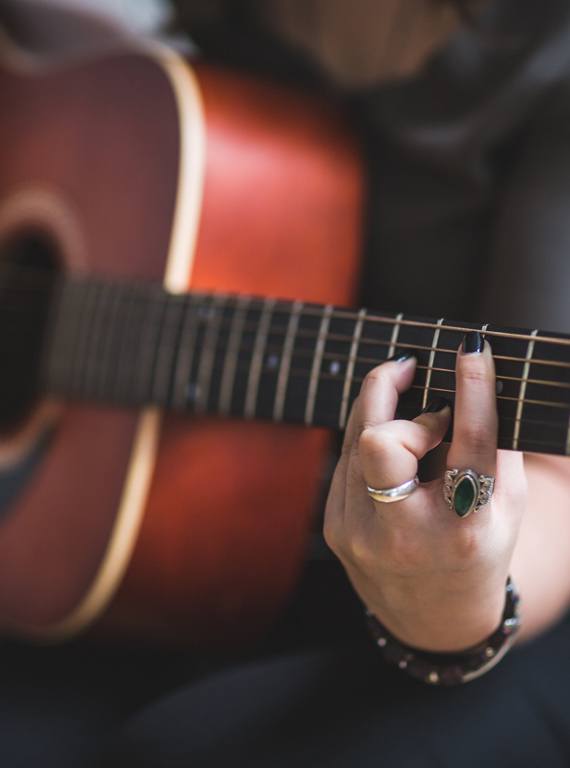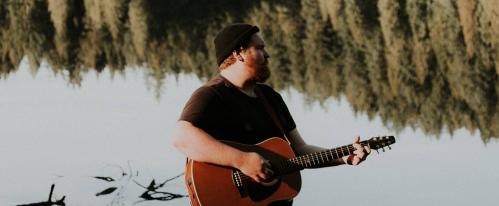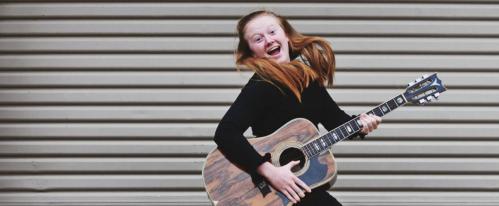WE SHOW YOU HOW TO READ GUITAR TABS IN OUR EASY TO READ VIDEO AND WRITTEN GUIDE THANKS TO THE GOOD PEOPLE OVER AT MGR MUSIC TUITION
If you're wondering how to read guitar tabs, don't worry, it's fairly simple once you get the hang of it! Guitar tab is one of the most widely available and easily accessible forms of notating guitar-based music. From the offset, it might look complicated, but it’s not as difficult as you might first think - it just takes a little practice. Before you know it you'll be learning your favourite songs and improving your skills along the way.
WATCH OUR HANDY VIDEO ON HOW TO READ GUITAR TABS!
Before we start, we recommend following along with this handy video guide on reading guitar tabs.
SO WHAT DOES GUITAR TABLATURE LOOK LIKE AND HOW DO I READ GUITAR TABS ONLINE?
Guitar tab in its simplest form, is 6 horizontal lines, each representing a string on the guitar:

Traditional music notation is a 5-line stave where each line represents a specific pitched note. Dots are placed on each line representing the length of that specific note. In guitar tab, these dots are replaced by a series of numbers.
Tab does not give any melodic or rhythmic information; it simply directs you to which notes are being played and on what string. The plus side to this is that it encourages you to listen to the song and use your own rhythmic and melodic knowledge to figure our strumming patterns. The bottom line on the tab represents your low E string (thickest) and the top line represents your high E string (thinnest).
This means the tab is arranged with the highest pitches at the top and the lowest pitches at the bottom, the same as you’d visualise your guitar neck if it was laid flat in front of you. The lower notes are closer to you and the higher notes further away. Let’s look at some examples of numbers and how that translates to the guitar fretboard.
If we were to see a “0” on one of the strings like this, you would play that specific string as an open string. In this case, the 0 appears on the bottom line of the tab. This means the open string in question here is the low E string.

Notes laid out running left to right on a tab line are played in sequence. The following image shows a 4-note pattern. You’ll notice all the notes are arranged on the bottom line of the tab. Once again, this means they are all along the Low E string and are played one after another. Starting with the open string, before going to the 2nd fret, 3rd fret and back to the 2nd fret.

When notes in tab are stacked on top of each other, like this image, this means they are played at the same time. In this example, the frets are the same as the previous example (Open, 2nd fret and 3rd fret) but this time they are played across two strings at the same time, the D and G strings. Anytime you see notes stacked, they should be picked together, this is also true of how chords appear in tab which we will get to shortly.

You may also see note patterns that cross strings like this. As the notes are not vertically aligned anymore, this means they are played left to right as if we were playing a one string pattern, except the pattern now extends across two strings at the same time. Again, we are on the D and G strings.

Identifying chords on guitar tabs
Chords can be tricky to visualise when you first see them written down as tab. Chances are, you learnt your chords from chord boxes and finger diagrams, so you already have an inbuilt way of visualising them. It takes a little practise to get used to seeing chords in this way, so along with these few examples here that we’ll be using in the chord progression outlined in the video, there will be a few you can try to guess yourself.
Write down your answers and check them at the end of this lesson. Start with an E Minor, you’ll notice by looking at your fretting hand that you are playing the 2nd fret on both the A and D strings, and all the remaining strings are open. What this doesn’t tell you is which fingers to use to play the chord. Most people will play this chord with their first and second fingers, or their second and third fingers.

This is how an A Major chord would look in tab form. Put your hand in the position you already know to be an A Major and look at the notes. The A string is open, as is the high E string. You are also fretting the 2nd fret on the D, G and B strings. Any unused strings in tab are simply left blank.

The same applies for this D chord. You are fretting the 2nd fret on the G and E strings, the 3rd fret on the B string and the D string is played as an open. Chord progressions in tab form are sometimes tricky to visualise. This shows each of the three chords being played four times, but this does not give me any rhythmic information. As outlined in the video, there are two examples of this being played two ways: Straight quarter notes – one strum on each beat.
The first strum being a half note (2 beats), the second strum landing on the third beat and the final two strums being a pair of eighth notes split over the last beat. If this was a song that we were learning, we would need to listen to the song and use our existing knowledge on note lengths to try and hear what strumming pattern is taking place rather than relying on the visual. Some professionally published tabs may contain rhythmic information, but often, you will simply just see the chords notated in this way

About the Author Leigh Fuge is a professional guitar player and tutor from Swansea in South Wales and a guitar writer having written and produced content for Guitar Magazine and many other high profile guitar publications and websites. If you enjoyed this article and video, don’t forever to check out PMTVUK on Youtube for more guitar lesson videos. Professional guidance can make all the difference to your development. Head over to mgrmusic.com and find a great teacher in your local area today. We have a great network of teachers around your local PMT stores including the ones in Liverpool, Cardiff and Manchester.
About The Author:
This lesson was brought to you by MusicTeacher.com, written by experienced guitar teacher Leigh Fuge. Leigh works as part of a community of guitar teachers based across the UK. We have now launched a Guitar Lessons Milton Keynes hub, working with a professional guitar teacher based in central Milton Keynes to offer lessons to students of all learning abilities. To find guitar teachers local to you, as well as online guitar lessons, simply visit the MusicTeacher.com platform.
If you enjoyed this article and video, don’t forget to check out PMTVUK on Youtube for more guitar lesson videos.




